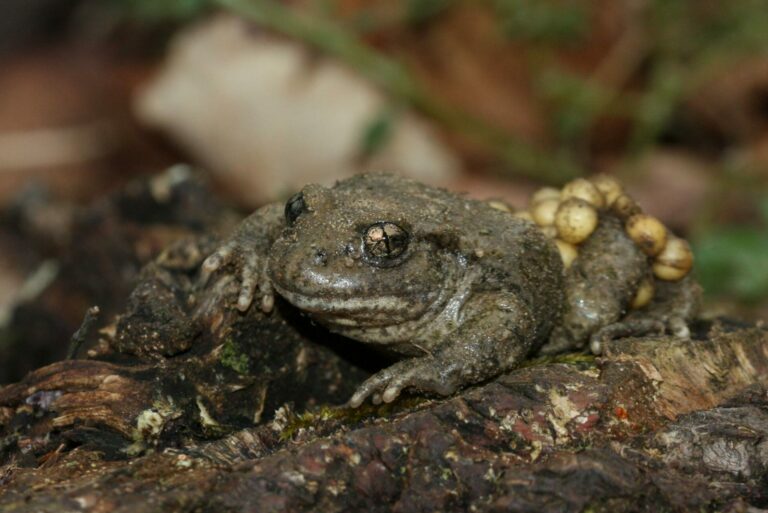Alytes obstetricans

Alytes obstetricans can reach a body length of up to 5.5 cm. The upper part of the body is gray-brown with dark brown spots, and the skin is very rough and wart-covered. Along the sides of the body, there is a row of larger, light to orange-colored warts. During the breeding season, the female can be identified by the yellowish eggs visible through the hind belly skin. Midwife toads live exclusively terrestrial as adults. The female lays approximately four strings of spawn with 20-80 eggs each, which the male wraps around his hind legs and carries for up to six weeks. When the larvae are ready to hatch, the male transports them to a suitable body of water. This species is active between March and September and inhabits habitats such as slopes, meadows, or quarries.
The midwife toad is threatened by predation from certain bird species, the grass snake, and the raccoon, while larvae are preyed upon by newts, dragonfly larvae, and the fire salamander. Other threats include habitat destruction and the chytrid fungus, which affects the skin of the animals and leads to death (Glandt 2018).
Diet: Alytes obstetricans feeds on insects such as beetles, caterpillars, and ants, as well as worms, snails, and spiders (Glandt 2018).
Threat Status: In Germany, the midwife toad is classified as “critically endangered.” It is considered “strictly protected” according to the Federal Nature Conservation Act and also protected throughout Europe under Annex IV of the Habitats Directive.
-
Glandt D (2018)Praxisleitfaden Amphibien- und Reptilienschutz. Schnell – präzise – hilfreich. Berlin, Heidelberg: Springer Berlin Heidelberg.